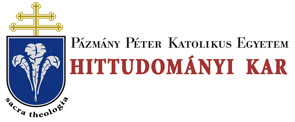Fodor György - Török József - Tusor Péter (szerk.): Felekezetek az Igazság szolgálatában: történelem, teológia, önazonosság (1500-2000) - Studia Theologica Budapestinensia 34. (2009)
I. Catholic-Orthodox symbiosis in Transylvania (Katolikus-ortodox együttélés Erdélyben) - Ioan Chirila: Tolerance and intolerance in t he Transylvanian legislative corpora (the 16th-19th centuries)
the principle of the freedom of “all” religions, a fundamental principle for the constitution of the new Romanian state. From where arose this conscience? We think that there is an organic relation between the materialized confession of faith and the freedom of religion, that is, when you are fully conscious of the concretization of your relation with Christ toward the others, you show the understanding of Christ and you remain toward the others in a simple, but firm, act of Christian martyrdom. The genuine freedom, and implicitly the real religious freedom/ tolerance is the one which opens the human person toward the fruit-bearing of the love of Christ, an act-love with profound implications of restoring the human being. Therefore, this is the motive of our speech. It will not turn our presentation into a simple historical narration, but rather aims at the restoring of some terms, concepts, attitudes and legislative structures, by getting them out of the position of being the source of hate and of the limitative attitudes toward the freedom of religion. Within this torrent of globalization, we think that this kind of initiatives and of directions of approaching is extremely important. Historical preliminaries. We are talking here about Romanians, about this people whose roots are to be found in the union between Dacians and Romans, followed by some waves of migratory peoples. Some of them left, other remained, a certain fact is that almost all of them have left their marks upon the structure itself of this people, whose genesis ends, according to most of the historians, in the git-ll'h centuries.1 This historiographic area, this chronological stage must be thoroughly studied. The archeological relevancies of the first millennium1 2 attest the existence of a very developed religious life, registered in the eastern canonical and dogmatic structures. What is very interesting for this period is the fact that we don’t find any legislative structures which restrict the freedom of the others, that is, of the groups and of the religions of the cohabitants. The Romanian Christianity was a special case of em1 Treatise of the History of Romanians (1-VIII), The Romanian Academy, the Department of Historical Sciences and Archeology, Ed. Enciclopedica, Bucharest 2001-2003. 2 D. TUDOR, The Romanian Archeology, Bucharest 1976; S.A. Luca, General Archeology, Sibiu, 1999. 14
